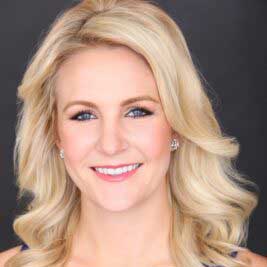When I started playing golf at age 7, I always looked forward to the par-3s. I loved seeing the hole in its entirety, often from an elevated tee.
When you’re just starting out, playing a hole in regulation is tough. (And let’s be honest: As a veteran player, regulation golf often remains elusive.) But even as a kid, I felt there was something deeply satisfying about hitting the green in one shot, and I still love par-3s for that reason today.
Fast-forward to the present day, and my handicap is on a steady rise. My two kids aren’t quite ready to play regular rounds, and like all parents, my “leisure time” is generally spent shuttling them to their activities, not working on my short game. Finding a six-hour block for a round of golf is a rarity, and requires much planning to pull off.
That’s why it was such a breath of fresh air to visit 3’s, a new 12-hole short course in Greenville, S.C.
At 3’s, each hole, as the name suggests, is a par-3 ranging from 92 to 175 yards. The holes may be short in length, but they are by no means easy. After logging two rounds over two days at 3’s, I realized that this short-course concept — which ia aiming to expand across the country — is my new favorite way to play.
And there’s even more reason to love it: Starting this year, short courses like 3’s are now eligible for a Course Rating and Slope Rating to be a part of the World Handicap System, which is administered by the USGA here in the United States. That means that you can start and maintain a Handicap Index using only short-course scores. You only need to log six nine-hole scores or three 18-hole scores to establish a handicap.
This WHS development is fantastic for more than 600 short courses around the country. Here are five reasons why it’s so great — and how it can benefit your game too.
5 benefits from the new short-course ratings
1. TIME
This one is obvious, but for me, it’s by far the most important. Time. Time! At 3’s, like other short courses, you can get around quickly, in less than a couple of hours. That’s huge! As much as I love to play a round on a regulation course, the time commitment — and the uncertainty about who you may have to wait on ahead of you — can make a long round even longer. The pace is brisk at 3’s, enabling you to make golf a part of your day, not the whole thing. And the fact that these quick rounds can now contribute to your Handicap Index is a welcome change.
2. NINE-HOLE ROUNDS
Thanks to the 2024 changes to the WHS, 9-hole rounds now count immediately toward your Handicap Index. (In the past, two nine-hole rounds needed to be combined to be eligible for handicap inclusion.) Now, that quick nine before or after work can take immediate effect. And at a course like 3’s, where you can play under the lights, that means late-evening loops count, too!
3. COMMUNITY
If you’ve never had a Handicap Index before, start playing your local short course and join more than 3 million others who are in on the fun! Signing up is easy, and once you have a handicap, you can compete or play for fun against anyone on an even playing field.
4. INCLUSIVITY
Short courses have the benefit of eliminating much of the intimidation factor that can be present at many full-size courses. At 3’s, the environment is welcoming to all. Kids play alongside their parents and grandparents, and beginners feel comfortable taking their first swings in a real round. And now, all these players can establish handicaps too!
5. IMPROVEMENT
Once you have established a Handicap Index, logging rounds is just the beginning. You can use the GHIN app to access GPS yardages, view putting green heat maps, keep in-round stats like greens and putts hit, and track your performance by viewing your stats over time — all of which will help you identify areas to practice, helping you improve.











